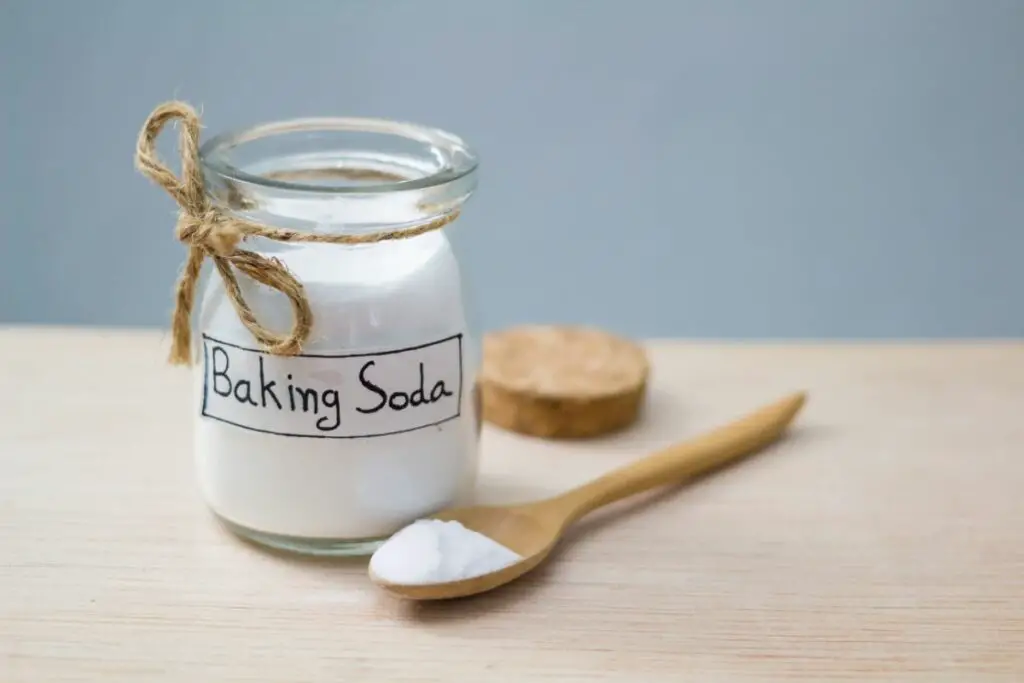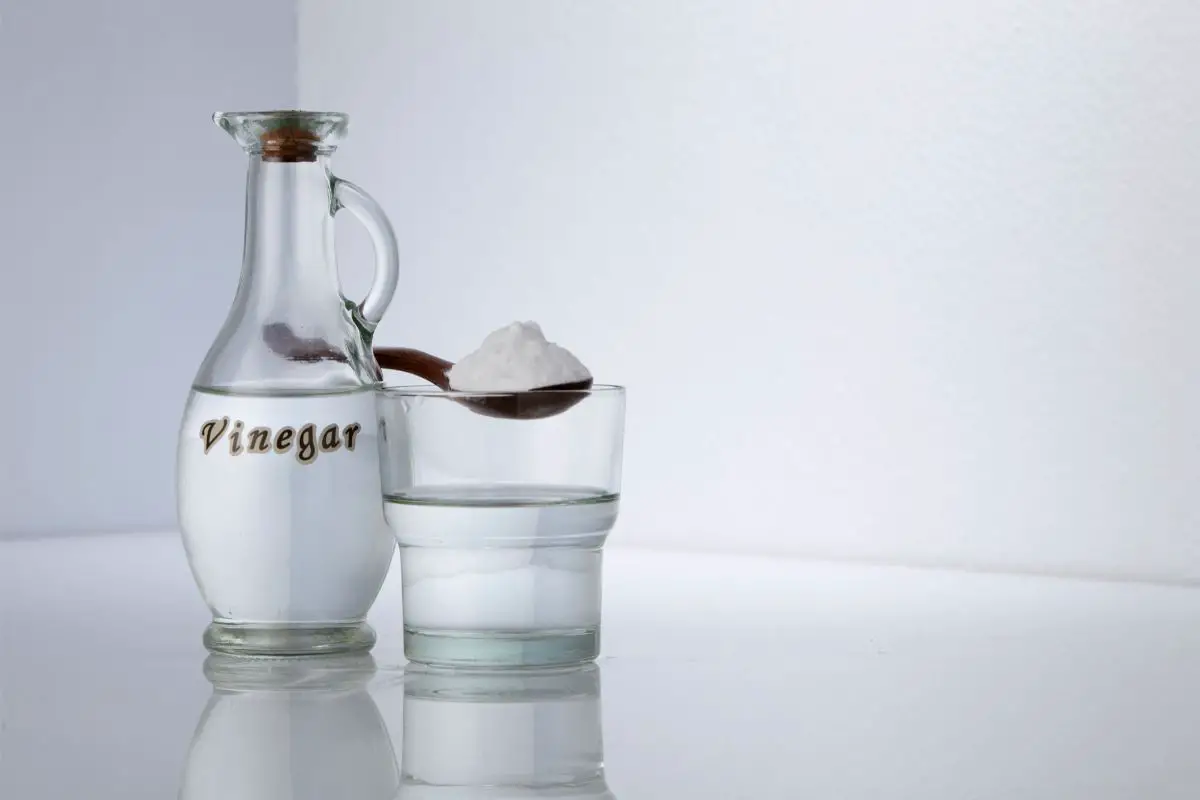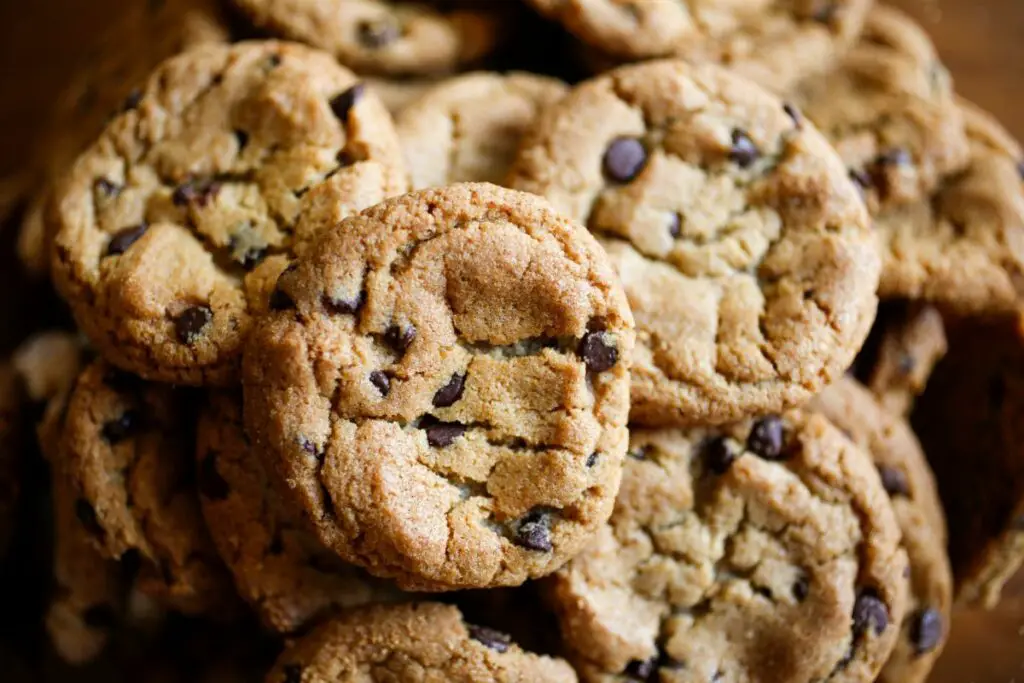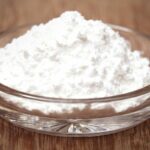Baking soda is a common ingredient used in baking, especially in cookie recipes but have you ever wondered what it actually does?

It is often added to the dry ingredients and acts as a leavening agent, helping the cookies rise and become fluffy. However, the role of baking soda in cookies goes beyond just leavening.
In this article, we will explore the various functions of baking soda in cookies and how it affects the texture, flavor, and overall quality of the final product. Let’s dive in!
What Is Baking Soda Made Of?
Baking soda, also known as sodium bicarbonate, is a white crystalline powder that is made up of sodium ions (Na+) and bicarbonate ions (HCO3-)
Baking soda is typically produced through a chemical process called the Solvay process.
In this process, sodium chloride (NaCl) and ammonia (NH3) are combined with carbon dioxide (CO2) and water (H2O) to form sodium bicarbonate (NaHCO3).
The resulting solution is then filtered and dried to produce the baking soda powder that is commonly used in baking and other household applications.
Baking soda is also used for a variety of other purposes, including cleaning, deodorizing, and as a remedy for heartburn and indigestion.
Baking Soda As A Leavening Agent
Did you know that baking soda is the secret ingredient that makes your cookies rise and turn out fluffy?
Baking soda reacts with acidic ingredients in the cookie dough, like brown sugar or cream of tartar, to produce carbon dioxide gas.
This gas gets trapped in the dough, causing it to expand and rise while baking in the oven. Without baking soda, your cookies would be flat and dense.
To achieve the perfect texture in your cookies, it’s important to use the right amount of baking soda. Too little baking soda and your cookies won’t rise enough, resulting in a dense and hard cookie.
On the other hand, too much baking soda can cause your cookies to spread too much and become thin and crispy.
The general rule of thumb is to use 1/4 teaspoon of baking soda per 1 cup of flour in your cookie recipe. By using the correct amount of baking soda, you can ensure that your cookies rise to perfection.
Creating Carbon Dioxide Gas

How does baking soda actually create this carbon dioxide gas? When baking soda is mixed with an acid, it undergoes a chemical reaction called acid-base reaction.
During this reaction, baking soda releases carbon dioxide gas, water, and salt.
The carbon dioxide gas bubbles through the dough, causing it to rise and giving the cookies a light and airy texture.
So, the next time you add baking soda to your cookie dough, remember that you’re not just adding a simple ingredient, but a magical component that will transform your cookies into fluffy and delicious treats.
Browning And Texturing Cookies
Baking soda also helps to promote browning and caramelization on the surface of the cookie.
This is because baking soda has a basic pH, which helps to neutralize the acidity in the dough and create a more alkaline environment.
This alkaline environment promotes the Maillard reaction, which is a chemical reaction that occurs between amino acids and reduces sugars when heated.
This reaction is responsible for the browning and delicious nutty flavor of cookies.
So, next time you’re making cookies, remember the important role that baking soda plays in creating the perfect texture and flavor!
Enhancing Flavor Profiles
The Maillard reaction, mentioned above, helps develop a richer flavor profile by promoting caramelization. When cookies are baked, the sugars in the dough start to caramelize, creating a complex and delicious flavor.
Importance Of Baking Soda In Cookie Making
In addition to improving taste, baking soda also plays an important role in the texture of cookies.
It creates a crumbly and tender texture by breaking down the gluten in the flour and preventing it from becoming tough and chewy.
However, it is important to use the correct amount of baking soda in your recipe as too much can result in a bitter taste and a coarse texture.
Chocolate Chip Cookies With Baking Soda

Ingredients
- 2 1/4 cups all-purpose flour
- 1 tsp baking soda
- 1 tsp salt
- 1 cup unsalted butter, at room temperature
- 3/4 cup white sugar
- 3/4 cup brown sugar
- 2 eggs
- 2 tsp vanilla extract
- 2 cups semisweet chocolate chips
Instructions
- Preheat the oven to 375°F and line a baking sheet with parchment paper.
- In a medium bowl, whisk together the flour, baking soda, and salt.
- In a large bowl, cream the butter, white sugar, and brown sugar until light and fluffy.
- Add the eggs one at a time, beating well after each addition.
- Stir in the vanilla extract.
- Gradually add the dry ingredients to the wet mixture, stirring until just combined.
- Fold in the chocolate chips.
- Drop tablespoon-sized balls of dough onto the prepared baking sheet, spacing them about 2 inches apart.
- Bake for 10-12 minutes, or until the edges of the cookies are golden brown.
- Remove from the oven and let cool on the baking sheet for 5 minutes before transferring to a wire rack to cool completely.
Enjoy your delicious chocolate chip cookies with a crispy texture, thanks to the baking soda!
Conclusion
So what does baking soda do in cookies? As we’ve learned, baking soda serves as a leavening agent, creating carbon dioxide gas that helps cookies rise and become fluffy.
It also contributes to the browning and texturing of cookies, giving them that desirable crispy exterior and soft interior.
Additionally, baking soda enhances the flavor profiles of cookies, making them taste richer and more complex.
Overall, baking soda plays a crucial role in cookie making and should not be overlooked.
Its effects on texture, flavor, and appearance are undeniable and can make the difference between a mediocre cookie and a truly exceptional one.
So the next time you’re whipping up a batch of cookies, make sure to include baking soda in your recipe for the best results!
- How To Make Honey Butter - July 4, 2023
- How To Make Meringue - July 3, 2023
- What Is Shortening? - July 3, 2023









